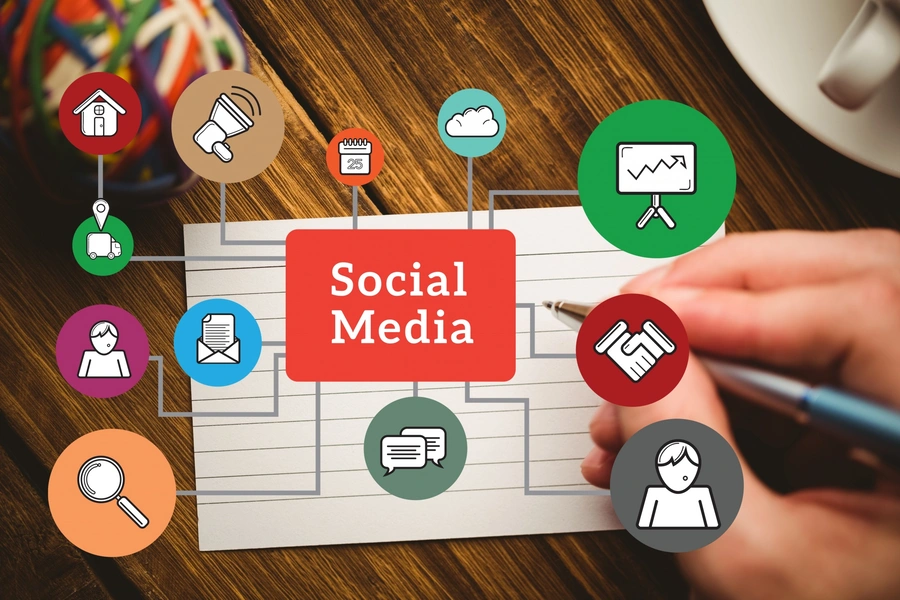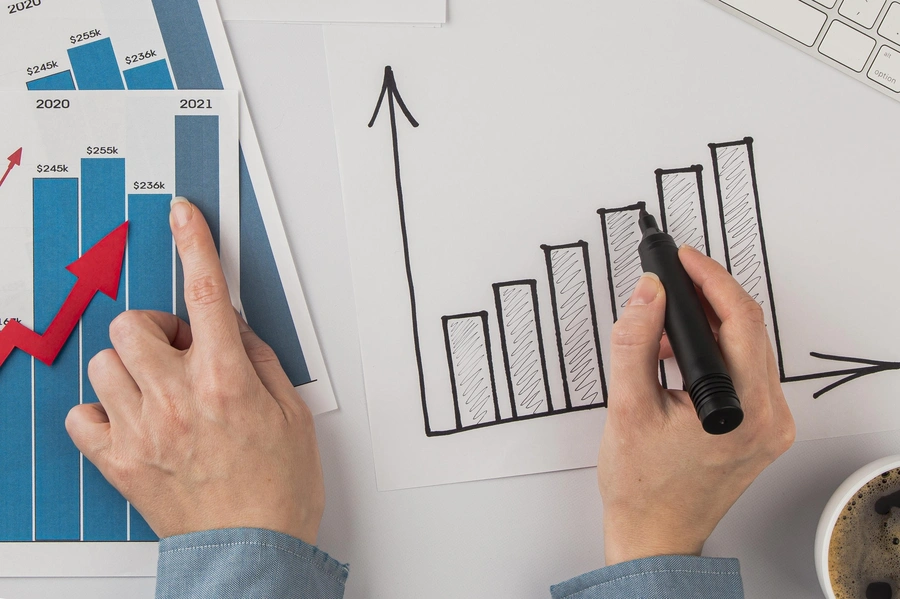Social media is a critical marketing tool, whether it’s a large, medium, or small business, but it also can be a nightmare; because these channels have a lot of metrics to track, and data overload in campaigns might make you miss the most effective factors on its success or failure.
So, which metrics should you track? Are they even important for your business? In this article of Night Agency, we’ll take you through the best social media metrics every company should pay attention to.
To measure the success of your social media efforts, it’s important to track and analyze several metrics across them. They can vary from one platform to another; the main ones are the same on Facebook, Instagram, Pinterest, Twitter, TikTok, and LinkedIn, and keep you on top of your goal, campaigns, and strategies:
- Reach
- Impressions
- Engagement Rate
- Conversion rate
- Click-Through Rate (CTR)
- Follower Growth
- Cost Per Click (CPC)
- Cost Per Mille (CPM)
- Social Share of Voice (SOV)
- Virality rate
- Video views
- Video completion rate
Let’s take a more in-depth look at them.

1. Reach
Reach is the number of people who have seen your content and shows how far your message is spreading. You can see what percentage of your Reach is made up of followers and non-followers.
A high Reach indicates that your content is sharing and gaining exposure, and if many non-followers are seeing your content, it means you’re doing well.
2. Impressions
Impressions measure the number of times your content is displayed to users, no matter whether they see it or click on it.
3. Follower Growth
High Reach will be more valuable if we can maintain the visitors. This metric indicates whether your content resonates with your target audience and attracts new followers. You can track follower growth by comparing the number of followers over time.
4. Engagement Rate
Engagement rate measures the level of audience interaction with your content or account. It takes into likes, comments, shares, and other forms of engagement. A high engagement rate signifies that your audience is interested in what you’re posting, which is a great indicator of success.
5. Conversion Rate (CR)
Conversion rate shows the number of people who take action after seeing your content which could be anything from purchasing to filling out a form or subscribing to a newsletter.
Tracking conversion rates helps you understand how effectively your social media campaigns convert leads into customers.

6. Click-Through Rate (CTR)
Click-through rate or CTR measures the number of clicks your content, the call-to-action links, receives relative to its impressions. A high CTR indicates that your content is compelling and driving people to take action.
7. Cost Per Click (CPC)
If you’re running paid advertisements on social media, cost-per-click or CPC shows how much you pay for each click on the ad.
8. Cost Per Mile (CPM)
CPM is the cost you pay for every thousand impressions of your social media ad. It’s all about views, not actions.
Social share of voice calculates the percentage of total brand mentions within an industry or among a defined group of competitors.

This metric is so popular among marketers; because it shows the strength of their brand and its influence among the customers. They also find the measure of the market their brand owns compared to competitors.
The more people talk about a brand on social media and know it, the higher its share of voice in its target market.
10. Virality rate
This parameter measures how many times people share the content compared to the number of its unique views.
Everyone on social media wants to go viral for enormous awareness and conversion. That’s why tracking your virality rate is so helpful.
11. Video views
If you’re creating videos, knowing how many people are watching them is essential.
However, each social media has different instructions for counting the views; what counts as a “view”? When someone watches 3 seconds of the video or 5 seconds of it? Usually, they consider a few seconds of watch time counts as a “view.”
12. Video completion rate
Video completion rate reflects the percentage of viewers who watch your entire video without skipping a single part. It helps you understand how well your content is performing.
Where can you find this data?
Each social network has its own in-platform analytics, and you can find the raw data like views or impressions there. Every other metric has a formula based on them. Some tools like HubSpot, Hootsuite, or sprout help companies manage their social media and calculate all the main metrics. So, connect your accounts to these social networks’ analytics, and don’t worry about calculating problems.
Wrap Up
Social media give you a lot of data about your audience. Based on them, you can set right and clear goals and improve your performance towards them.
These networks have dozens of metrics, but here we compiled the best social media metrics that matter for most goals. These metrics are found on their in-platform analytics and platforms like Hootsuite or HubSpot.
FAQ
Social media metrics prove how successful your campaign is, how well your social strategy is performing, and how your target market is developing compared to competitors. Then you can decide about your next step and improve your strategies’ performance.
Among the dozens of social media metrics, ones are essential and matter for most businesses and goals:
Reach, Impressions, Engagement Rate, Conversion rate, Click-Through Rate (CTR), Follower Growth, Cost Per Click (CPC), Cost Per Mille (CPM), Social Share of Voice (SOV), Virality rate, Video views, Video completion rate.
3. Which metrics should matter to you most?
It’s really up to your goal and strategy; if you’re going after awareness, keep an eye on metrics like impression, view, or SOV, and when you’re running a sale campaign, CTR and CR matter.
Each social network has its own in-platform analytics; you can find the data there. You can also use helpful tools like HubSpot, Hootsuite, or sprout social networks’ analytics.

Leave a Reply